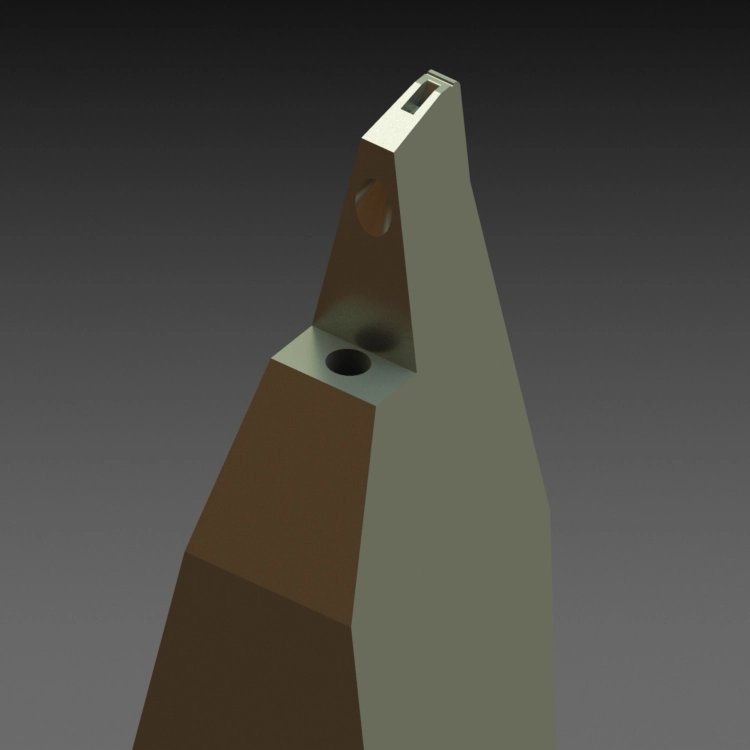SFP optical module introduction
SFP stands for Small Form-factor Pluggsable, which is a small pluggable optical module interface standard, commonly used in Gigabit Ethernet, fiber optic communication and other fields. The SFP module is small in size, suitable for dense layout, with hot-swappable function, easy maintenance and upgrade. SFP modules usually support a data transmission rate of 1.25G. The volume of the SFP optical module is half that of the GBIC optical module, and more than twice the number of ports can be configured on the same panel. The other functions of the SFP module are basically the same as GBIC. Some switch manufacturers call the SFP optical module a miniaturized GBIC (MINI-GBIC). The SFP optical module is an important part in the field of optical communications. The following will introduce the SFP interface from the aspects of structure, classification and special types.
Structure:
The SFP interface adopts a miniaturized packaging design with a size of 10.5mm x 13.4mm x 56.5mm, which enables it to adapt to the needs of high-density layout. The SFP interface usually includes components such as photoelectric converters, optical receivers, control chips, interface chips, and shells. Its hot-swappable design allows the SFP module to be replaced and upgraded without interrupting system operation, greatly facilitating maintenance and management.
Classification:
SFP optical modules are classified according to transmission mode: electrical port, single mode (SM), multi mode (MM)
1G SFP T RJ45 Optical Transceiver The electrical port SFP optical module can support a maximum transmission distance of 100m. The transmission medium is Category 5 twisted pair cable. The copper cable wiring system can be used to complete 1G Ethernet transmission. The cost of copper cable wiring is lower than that of optical cable wiring.
1.25G 10km duplex lc SFP transceiver Single-mode SFP optical module can support a maximum transmission distance of 10km. The transmission medium is optical cable. The optical cable wiring system can be used to complete 1G transmission. The optical fiber type is SMF.
1.25Gbps 550m Duplex LC SFP Transceiver The multi-mode SFP optical module can support a maximum transmission distance of 550m. The transmission medium is optical cable. The optical cable wiring system can be used to complete 1G transmission. The optical fiber type is MMF.
Special types:
BIDI-SFP: Single-fiber bidirectional SFP, using WDM technology to send and receive different central wavelengths in two directions, thereby realizing bidirectional transmission of optical signals on one optical fiber.BIDI optical modules have only one port, which is filtered by the filter in the optical module, and simultaneously transmits 1310 optical signals and receives 1550nm optical signals, or vice versa. Therefore, BIDI optical modules must be used in pairs.
CWDM SFP: Using CWDM technology, optical signals of different wavelengths can be combined together through an external wavelength division multiplexer and transmitted through one optical fiber, thereby saving optical fiber resources. At the same time, the receiving end needs to use a wavelength division multiplexer to decompose the complex optical signal. CWDM SFP optical modules are divided into 18 bands, from 1270nm to 1610nm, with a 20nm interval between each two bands. Colors are generally used to distinguish optical modules of different bands.
DWDM SFP: It belongs to the dense wavelength division multiplexing technology, which can couple light of different wavelengths into a single-core optical fiber and transmit them together. The channel spacing of DWDM SFP has different spacings such as 0.4nm, 0.8nm, 1.6nm, etc. according to the needs. The smaller the spacing, the more wavelength control devices are needed. A key advantage of DWDM SFP is that its protocol and transmission speed are irrelevant.
Precautions for using SFP optical modules
SFP optical module installation:
1. Push the SFP module smoothly into the guide rail

- Gently press the SFP to lock it with the guide rail

- Gently push the module outward to confirm that the SFP and connector are properly connected.

SFP optical module disassembly:
- Remove the optical fiber on the SFP module

- Gently press the SFP module to return it to its original position.

- Gently bend the SFP module pull ring outward about 90° to release the locking state between the module and the guide rail.

- Keep the pull ring angle and remove the SFP module from the guide rail

The above is an introduction to SFP optical modules. If you want to know more details, you can contact us. Thank you for your browsing.

















